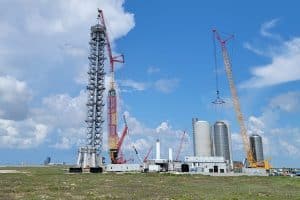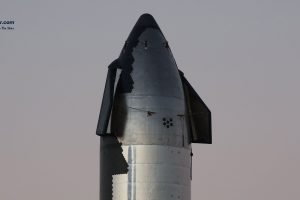- 🚀 SpaceX narrowly avoided aborting the Starship booster catch during its fifth test flight.
- 🌌 The catch involved Mechazilla’s “chopstick” arms, successfully capturing the Super Heavy booster.
- 🌊 The upper stage of the launch ended with a successful splashdown in the Indian Ocean.
- 😲 Engineers informed Elon Musk about the near-abort due to a misconfigured spin gas abort.
- 🎯 SpaceX managed to sidestep errors with new aborts and commit criteria just in time.
- 🚀 Future goals include catching the upper stage as well, with the next flight anticipated in early 2025.
SpaceX has consistently pushed the boundaries of what’s possible in the world of space exploration. The recent near-miss involving the Starship booster catch during the fifth test flight demonstrates both the challenges and triumphs facing the company. This blog post will delve into the complexities of this astounding feat and examine the implications for future endeavors in space travel.
The Fifth Flight: A High-Stakes Game
In the realm of space exploration, each launch is a dance on a knife’s edge, and nothing symbolizes this more than SpaceX’s fifth Starship test flight. Scheduled and executed on October 13, 2024, it was a mission that came perilously close to being scrapped. Yet, against the odds, the team executed what has been hailed as one of the most daring maneuvers in the history of the company.
The Role of Mechazilla’s “Chopstick” Arms
Understanding the Technology
Key to this mission’s success was an ominously nicknamed piece of equipment: Mechazilla. Utilized for the first time at such a scale, Mechazilla’s “chopstick” arms are designed to catch and stabilize the massive first-stage booster upon its return to Earth.
- Functionality: The arms work with precision technology to intercept the booster.
- Engineering Marvel: They operate within a very narrow set of parameters, accounting for vertical and lateral movements as the booster returns from orbit.
This level of innovation is reminiscent of juggling with fire; exhilarating yet overwhelmingly risky. A successful catch not only validates the technology but also paves the way for breakthrough advances in rocket reusability.
Near-Miss and Lessons Learned
Inside the Conundrum
The narrow avoidance of an abort during the booster catch arises from a critical issue: a misconfigured spin gas abort. Engineers admitted that a mere second stood between the successful operation and a catastrophic failure that might have prompted the rocket to crash beside the launch tower.
- Human Insight and Intervention: Rapid human insight intervened to circumvent potential disaster through on-the-spot adaptations.
- Lessons for Future: This close call elucidates the complex nature of automated checks and real-time decision-making in aerospace operations.
What Lies Ahead
SpaceX’s commitment to refining its technology is apparent in its future plans. With aspirations to incorporate the upper stage into catch scenarios, the next anticipated flight in early 2025 is set to be a groundbreaking moment in aerospace engineering.
Advances at the Horizon
- Broader Goals: Working towards a scenario where entire spacecraft components are reusable.
- Environmental Impact: Reduction in waste and resource consumption related to space travel technology.
- Feasibility of Mars Colonization: Continued advancements foreshadow real-world applicability in missions aimed at colonizing Mars.
Moving the Needle in Space Exploration
SpaceX continues to challenge norms, and the latest developments are just the tip of the iceberg. The symbolism behind Mechazilla’s arms catching a falling star supports humanity’s astronomical ambitions and lends credence to the possibility of human existence beyond Earth.





